Truman Capote is rumored to have said that his favorite food was chicken hash. Indeed, chicken hash was the centerpiece of the midnight buffet at Capote’s legendary 1966 Black and White Ball at Plaza Hotel. I love all kinds of hash myself and would happily eat some version of it every week even if I wouldn’t serve it at a society ball.
I have been guilty on many occasions of cooking extra meat and potatoes in the hopes of having leftovers to turn into hash. Cooking extra potatoes is actually not something to feel guilty about however. It is just good sense. Whether you are baking, boiling or roasting potatoes, it is very little extra work to prepare more potatoes than you think you will need for that meal. And then, as long as your dinner guests aren’t too greedy, when you go to think about the next night’s dinner, you have something incredibly versatile to build it around: leftover potatoes.
On Sunday night, as I often do, I roasted a chicken for dinner. On the side I prepared sautéed red cabbage and I roasted two bags of those small, South American purple potatoes. Purple potatoes are more nutritious than the red or yellow kind because they contain higher levels of anti-oxidants, so I always buy them when I see them in the store. Plus, how many purple foods are there, really? Eggplant and then what? Purple just happens to be my favorite color.
Despite the fact that Zuzu and I are rather greedy when it comes to potatoes, there were both chicken and potatoes left over after Sunday’s dinner. I resisted making hash for dinner on Monday because I didn’t want to bore everyone with essentially the same dinner two nights in a row. So on Monday, I folded the leftover chicken into a Japanese-inspired soba noodle salad with edamame, carrots and scallions. But when Tuesday came and I still had all those leftover potatoes, hash was inevitable.
The inspiration for my hash came from the gorgeous, striated Chiogga beets that were sitting in my vegetable drawer. If you see these beauties on your next grocery store trip, grab them. An heirloom variety from Italy, Chiogga beets will enchant you with their bright red and white stripes when you cut into them. Sadly, the colors fade when the beets are cooked. But they still taste delicious and at least you had that moment of joy looking at the riot of colorful stripes on your cutting board. (I call in the whole family to appreciate the beauty.)
Red flannel hash made with beets, potatoes and some kind of meat, usually corned beef, is a New England classic. The slightly unlikely combination of ingredients strikes me as something that came out of deep necessity — like starving Pilgrims kind of necessity — or at least a fervent desire to repurpose the leftovers from last night’s boiled supper. But as unlikely as the combination sounds, it is actually inspired. Red flannel hash is a complete one-dish meal and the combination of textures work together perfectly. The potatoes are soft and the beets are firm which makes for a pleasant contrast when chewing. Top with a fried or poached egg and the runny yolk creates a creamy sauce to counteract any starchiness or dryness from the potatoes.
I made my red flannel hash meatless — relying solely on the eggs for protein. But if you are inspired to make this hash and you happen to have bacon, sausage, corned beef or any leftover meat in your fridge, by all means, cube it up and throw it in. The Pilgrims would approve of your thriftiness.
I also opted for a poached egg to top my hash as it is a little less sinful than a fried egg. (More Puritan influence.) If egg-poaching scares you and you just love fried eggs, feel free to chose that option instead. But egg poaching isn’t really that scary. The key is not to panic when you first drop the eggs in the water and the white appears to be going everywhere. Most of the white will coalesce around the yolk, I promise, so long as you keep the water at a gentle simmer.
If you can’t find Chiogga beets or purple potatoes, you can use any beets or any boiling potatoes you like. It will still be red flannel hash even if it isn’t quite as red as mine is.
- 6 medium beets peeled and halved or quartered, depending on the size
- 3 TB olive oil (for roasting the beets)
- 3 TB olive oil, butter or rendered animal fat such as schmaltz or duck fat (for making the hash)
- 3 cups, cooked boiling potatoes cut into a 1-inch dice
- 1 yellow onion, diced
- 4 eggs
- Dash of vinegar (optional)
- Salt and pepper
- Begin by roasting the beets. Preheat the oven to 400.
- Toss the cut beets with olive oil, salt and pepper and spread them out in an even layer on a baking sheet.
- Roast beets until tender, about 35 minutes. (Can be done in advance.)
- To make the hash, heat the remaining butter, oil or animal fat in a large, deep skillet.
- Add the onion and sauté over medium heat until softened, about five minutes.
- Add the beets and toss to combine. Sauté until the beets have softened a little, about five more minutes.
- Add the potatoes and sauté until all the vegetables are heated through, ten to fifteen minutes. Season well with salt and pepper.
- While the hash is cooking, prepare to poach the eggs by adding several inches of water and a dash of white vinegar (optional) to a medium saucepan and bringing it to a simmer.
- When the water is simmering and the hash is ready to eat, poach the eggs.
- Crack the first egg, taking care to keep the yolk intact, into a small dish or ramekin.
- Stir the water to create a whirlpool and gently slide the egg into the center. Repeat with remaining eggs.
- Poach the eggs in simmering water for 3 minutes. Remove with a slotted spoon and drain on a paper towel.
- To serve, arrange the hash on a dinner plate and top with two poached eggs.
The vinegar in the poaching water is intended to tighten up the egg.
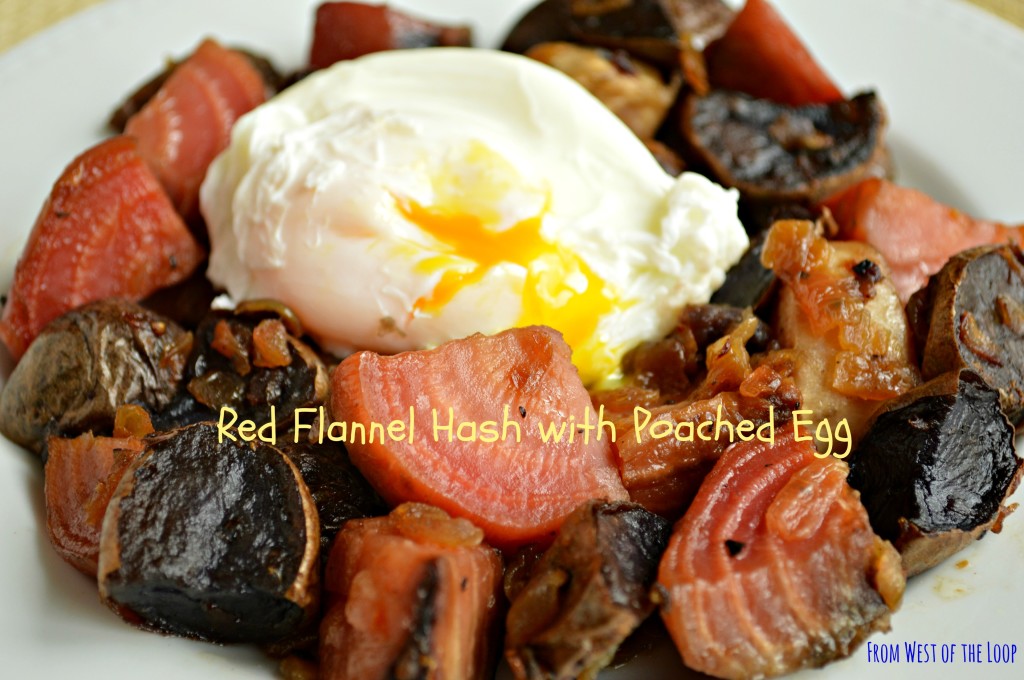
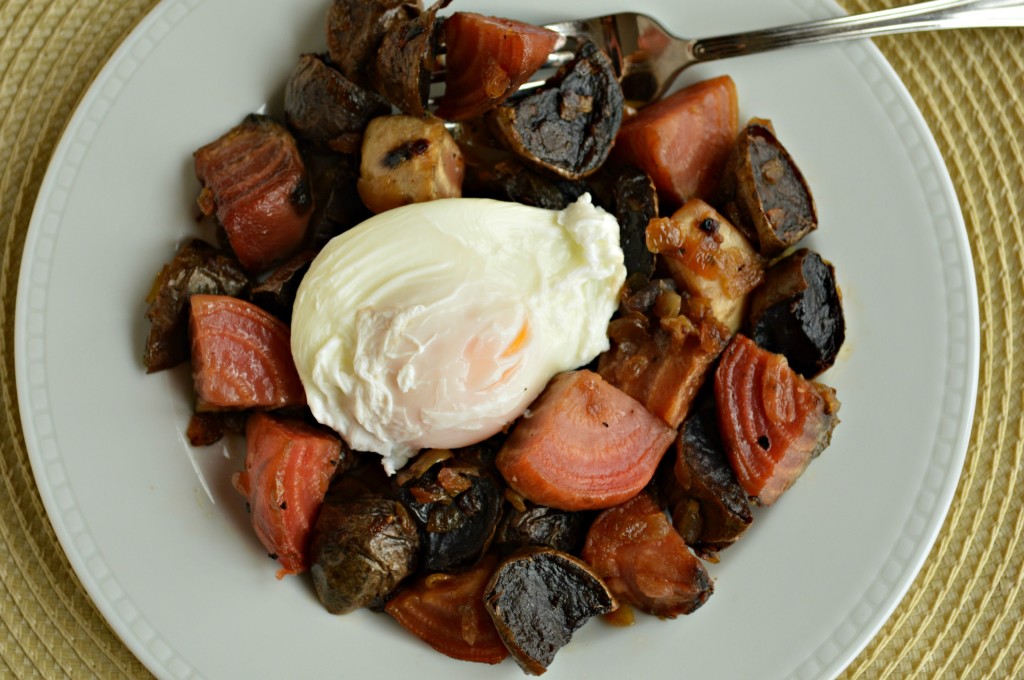
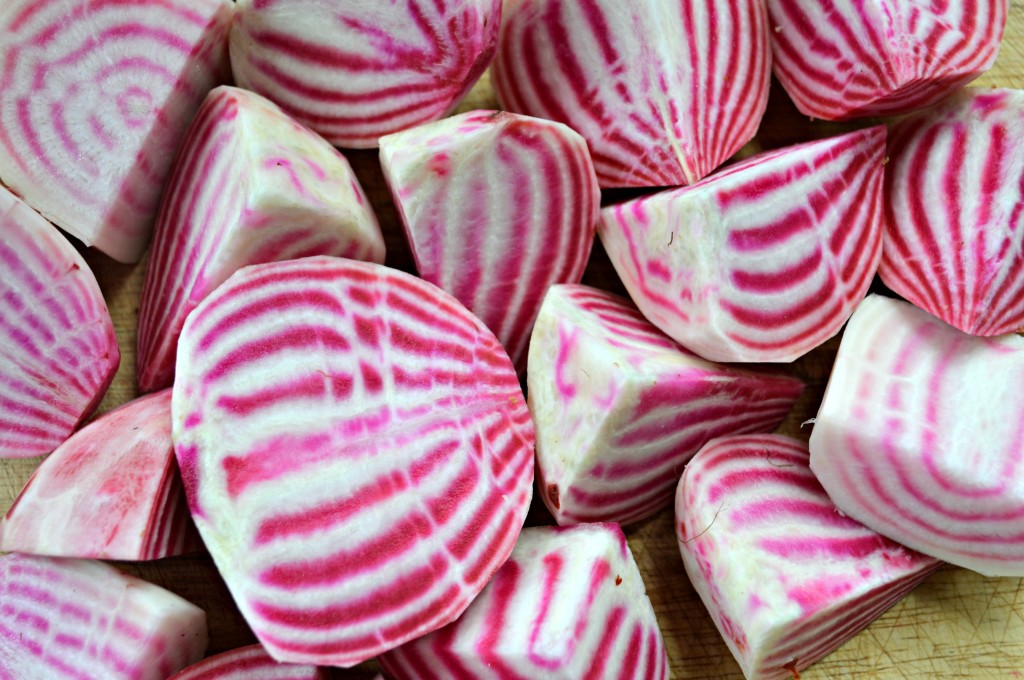
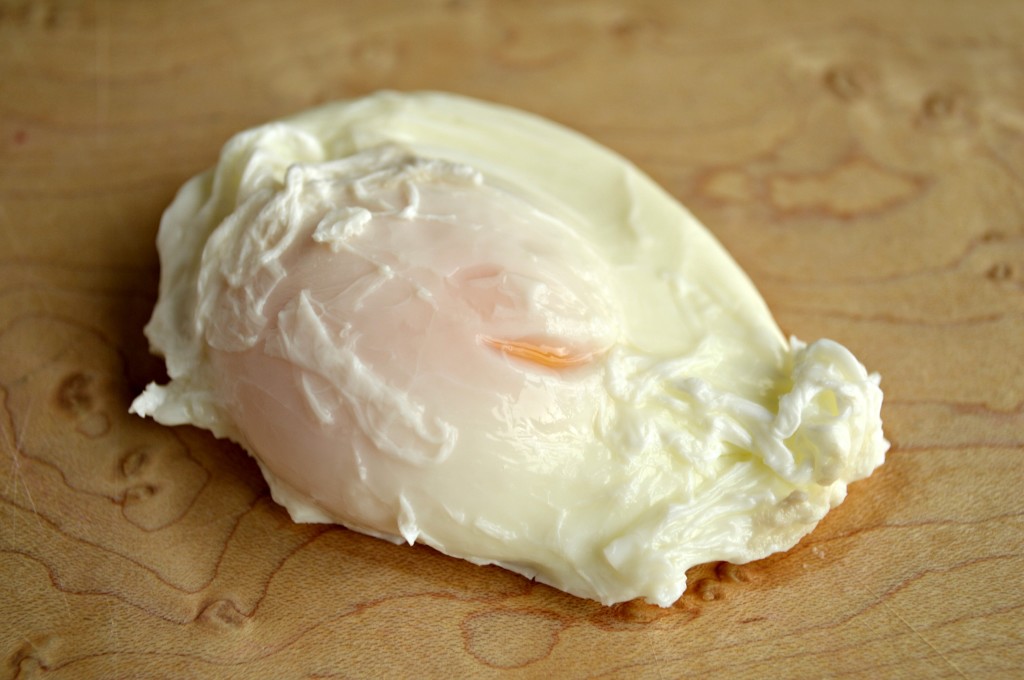
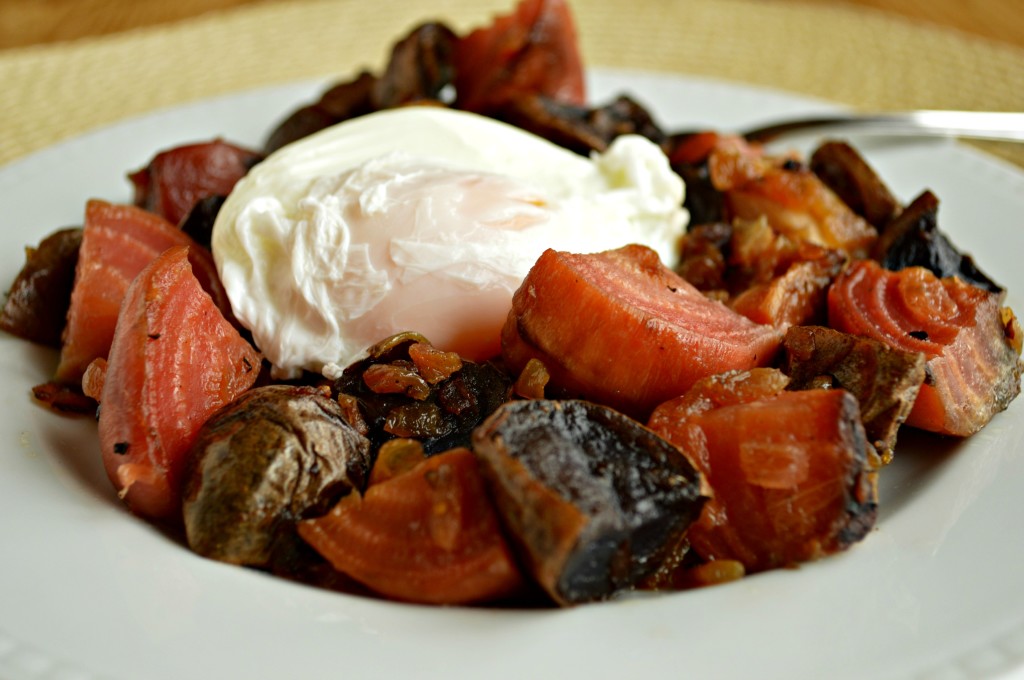

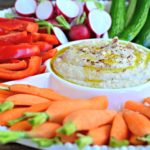
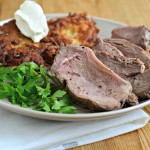



[…] your Mom is the kind that tells you to eat your beets, then you can make her Red Flannel Hash topped with poached eggs for […]